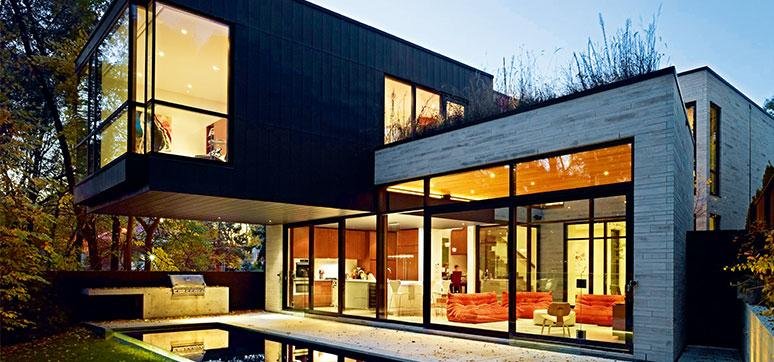Thermal break aluminum had revolutionized modern construction in terms of classiness, durability, and energy saving. The thermal break technology cuts down heat transfer within the inner as well as the outer aluminum-framed materials by the introduction of a non-conductive material in this gap; thus, it enhances better insulation and reduces loss of energy.
It leads to more sustainable building techniques, lowers energy costs, and provides comfort. These needs urged architects and builders to search for more innovative, high-performance materials.
Today, this focus on finding a greener way forward takes building a seamless form-function architecture that also demands more of contemporary architecture; hence the emergence of thermal break aluminum.
Key Features of Thermal Break Aluminium
Thermal break aluminum differs from the more traditional non-aluminium not in structure but their overall thermal performance is way better than the traditional one. Here are some main features of thermal break aluminum.
Energy Efficiency: Sustainability is one of the key reasons why thermal break aluminum is preferred and as seen, energy crises are rising so it can be a good choice to save energy.
It reduces the transfer of heat and helps maintain the temperature. Due to this, the use of HVAC can be reduced, leading to lower consumption of energy and lower energy bills.
Durability: Aluminum is a material of notable strength and durability. It cannot corrode, rust, or experience any changes because of weathering. These qualities make it highly flexible for any construction scenario. When used as an alloy with thermal break technology, it makes an even better option since it doesn’t just resist wear and tear due to different kinds of weather but also offers energy efficiency.
Due to the fact that aluminum is light but very strong, it is used pervasively in applications requiring a combination of strength and flexibility. With the installation of a thermal break, the structural integrity of the material is not compromised but elevated. Additionally, aluminum requires very low maintenance over its lifetime thus making it cost-effective in the long run.
Aesthetic Flexibility: Meanwhile, the appearance of thermally broken aluminum is more than just functional. It can take sleek and modern forms that architects and designers could use in most applications with minimal impact to visual appeal in a building.
The material can also hold large panes of glass, slim profiles, and modern architecture designs that demand minimalism and high performance. It can also be made in different colors and finishes according to a specific project’s design requirements.
Applications of Thermal Break Aluminum
Thermal break aluminum has got several applications in modern constructions, thus making it quite a sought-after material for most types of projects.
Windows and Doors
The most familiar application of thermal break aluminum is for windows and doors. In these, thermal breaks greatly reduce the loss of energy, where energy could be lost. The extreme weather conditions are usually prevented by excellent thermal break aluminum windows and doors through good sound insulation.
Curtain Walls
Thermal break aluminum is another significant area where it finds beneficial usage: curtain walls are strictly non-structural external walls that prevent the elements from penetrating. This ensures buildings do not lose heat without compromising on strength or design flexibility. This happens particularly in high-rise buildings, where every aspect of energy efficiency as well as weather resistance becomes crucial.
Cladding Systems
Thermal break aluminum is also employed in cladding systems that enhance a building’s insulation. This provides extra protection against rain, wind, and temperature fluctuations from external environmental elements. Cladding with thermal break aluminum improves the energy performance of a building and offers it a modern aesthetic.
Benefits of Thermal Break Aluminium
Environmental Impact
Thermal-break aluminum can be quite beneficial in many ways, considering the good environmental aspect involved. As it reduces heating and cooling needs, it helps reduce the energy consumption of a building.
This, in turn, reduces the carbon footprint of the structure, thus giving more towards sustainable building practices. Many green building programs require and recommend materials that help improve energy efficiency, and thermal break aluminum plays a key role in fulfilling these standards.
Long-term Savings
Thermal break aluminum may cost a little more when compared to the regular aluminum. However, long-term benefits against the cost are significant. The ability to insulate better than others may result in higher savings through energy bills over time. Additionally, its durability coupled with low maintenance means fewer repair and replacement works, which adds to the value for money on the material.
Improved Comfort Indoors
Thermal break aluminum maintains a pleasant indoor climate as it does not allow unwanted heat transfer. In winter, it keeps the warmth inside the building while, in summer, prevents heat from entering which reduces the load on HVAC systems and brings a stable temperature inside and hence comfortable for occupants.
Final Words
Thermal break aluminum quickly finds its place as a new standard in modern constructions, as it completes the concepts of energy efficiency, durability, and aesthetic flexibility. Its widespread use in windows, doors, curtain wall systems, and cladding systems gives greater versatility and value in pursuing sustainable, high-performance buildings.
The high initial investment is compensated not by economies in the cost but over a much longer period of time, environment friendly, and improved comfort ratings. Thermal break aluminum is the choice for modern constructions. With an increasing energy-conscious world, thermal break aluminum is bound to play an increasingly dominant role in future construction. visit tigerworks for more informative blogs.



More Stories
Tax Benefits of Using Virtual Offices
What Are Industrial Cable Glands and How Do They Work?
Benefits of Reviewing PTE Mock Test Results